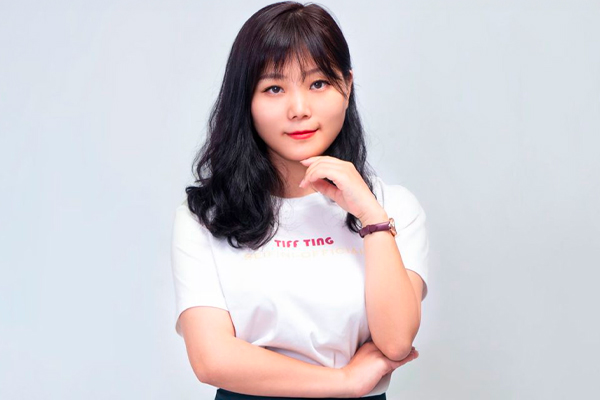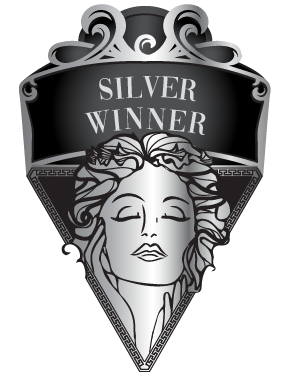
Interview
He MeiLin
1 Please give us a brief bio of yourself and your design background.
Hello everyone, I'm He MeiLin. I started to learn painting and music from an early age, and was so fortunate to become the first disciple for Mr. Ma YiDan. I was also enlightened by many art teachers in my teenage years, and thus gradually cultivated my enthusiasm and gift on painting. After graduating from school in 2004, I entered landscape design industry and have been a designer for more than 20 years. I developed fair and honest cooperation with my customers and created plenty of works throughout China. Recent years, I visited many countries (including the United States, France, Japan, Switzerland, Singapore and other countries) for academic studying and communication. As a professional landscape designer, I always insist on drawing and designing by myself in order to polishing my professional skills. After discovering some shortcomings of myself, I continued to my study on business management, and obtained a master's and doctoral degree
2 What made you become/why did you choose to become a designer/artist?
I have the opportunity to learn painting since I was a child, and also receive guidance from many outstanding teachers, which help me gradually become a professional designer. Painting gives me a strong sense of achievement, so I insist on exploring in this field for many years. In addition, the characteristics of perfectionism and adherence to self-principles also make me feel that I am very suitable to be a designer. When I find some good works, I feel a sense of calm and pleasant, which might be my unique
3 Tell us more about your business/company, job profile, and what you do.
AOBO Landscape is established in the spring of 2010. AOBO, the symbol of Wisdom and humble. AOBO always adheres to the vision of "perfect design, good life", and try to create a practical, comfortable, low-carbon and aesthetic space for residents, improving living quality and enhancing the sense of happiness. AOBO
4 What does “design” mean to you?
For me, design is a way of thinking and the capability of creativity. Design tests a designer's ability of logical thinking, strategic planning, professional skills and delicate comprehension of art. At the beginning of the project, designers conceives a creative concept, then use meticulous logical thinking to control and reasonably organize all sections, and finally create an aesthetic space for residents on both aesthetic and ecological level.
5 What’s your favorite kind of design and why?
I have seen different kinds of beauty in my daily work, so I prefer the minimalism in life. Less is more. Minimalism pursues the accuracy and perfection of design, pays attention to the sense of detail and sequence, and retains the simplest and most essential things, which can stand the test of time.
6 To you, what makes a “good” design?
Everyone's definition and standards for "good" are different. In my opinion, a "good" design needs to have a complete thinking model, pursue sustainable development, and consider residents
7 Describe your design style and its main characteristics.
My design is not limited to a single style. I usually pay much attention to cultural inheritance and innovation firstly, then collect residents
8 Tell us about your design process.
My design process is generally star from on-the-spot investigation, communicate with customers face to face, collect customer needs, sort out cultural resources, and analyse project materials fully. In the middle stage, after three stages of repeated affirmation, negation, and negation, we finally determine the project positioning and design ideas. In the later stage, we organize various sections of the project reasonably and finally presents a space where life is closely related to human beauty for the occupants. In other occasions, we will go through a long period to check check and testify, but also enjoy it.
9 Do you think your country and its cultural heritage has an impact on your design process?
I grew up in China and live in my country for years.Traditional Chinese culture flows in my body. From the macro perspective of view, Oriental beauty is a unique and charming culture. Chinese culture follows the philosophy of respecting nature, so the design industry attaches great importance to the reverence for nature and the concept of sustainable development. All these will have an impact on my design process.
10 Congratulations! As the winner of the 2023 MUSE Design Awards, what does it mean to you and your company and team to receive this award distinction?
Thanks a lot for your recognition of my team. It is a great honor to receive this award, and we are so encouraged by this. It greatly affirms our design, and we will try our best to do something for our planet.
11 Can you explain a bit about the winning work you entered into the 2023 MUSE Design Awards, and why you chose to enter this project?
Chengdu Courtyard is located in Anren Town, the only museum town in China, Dayi County, Chengdu. The project has a new Chinese charm of Sichuan style, which is connected in series in the form of streets, lanes, courtyards and water, so that the architecture and the natural landscape can coexist. By depicting a freehand landscape painting, the project has created a comprehensive villa cluster integrating commercial and cultural life. We hope to promote the charm of Oriental culture and welcome you to visit this beautiful courtyard in Chengdu.
12 What was the biggest challenge with this project?
The biggest challenge is that we need to build traditional and modern ecological texture in a limited space.It test really test the ability of innovation and creativity.
13 How has winning an Award developed your practice/career?
It
14 What are your top three (3) favorite things about our industry?
First, I like to go to various places for academic studying and communication, which can help understand the cultural differences between different regions and different countries. I have visited the United States, France, Japan, Switzerland, Singapore and other countries many times these years, and learned ways of design thinking of different countries, which has greatly broadened my horizons. Second, it gives me a sense of accomplishment to incubate my creative ideas and have a certain impact on the occupants. Third, I took the opportunity to be a guest professor in universities to communicate with new generation and convey the soul and spirit of designers, which also made so energetic.
15 What makes your country specifically, unique in the design industry?
Every country has its own advantages and disadvantages in design industry. The United States pays more attention to the construction of ecological texture, and the general project cycle is longer. Their project is usually charged by time. In recent years, China has also attach great importance to carbon neutral design and the integration of architectural space and nature. In comparison, the project cycle is relatively short, and the project is generally charged for piece.
16 Where do you see the evolution of design industry going over the next 5-10 years?
AI is a hot topic in the industry now, and many people reckon that AI will replace the designers. I firmly believe that designers are irreplaceable because of their creative thinking and creativity. Design is non-standardized and flexible, while the practical application ability of AI is too limited. In addition, in the next 5 to 10 years, the culture of different regions will be extremely presented and bloomed under the application of science and technology. The future is an era of cultural integration.
17 If you were a student entering this industry or an aspiring MUSE Design Awards submitter, what advice would you give them?
The MUSE Award requires for pragmatism, culture and foresight of works. Participants can focus on these aspects.
18 What resources would you recommend to someone who wants to improve their skills in the design industry?
There are a lot of resources in the design industry, but the most important thing is to cultivate the ability of thinking in our daily life.
19 Tell us something you have never told anyone else.
Let secrets remain mysterious.
20 Who has inspired you in your life and why?
A small corner in nature or a small thing in life has its past and future. We should love life and embrace nature, and then think about its practical use in future.
21 What is your key to success? Any parting words of wisdom?
How to define success? Everyone can get a sense of satisfaction in their industry, and that

